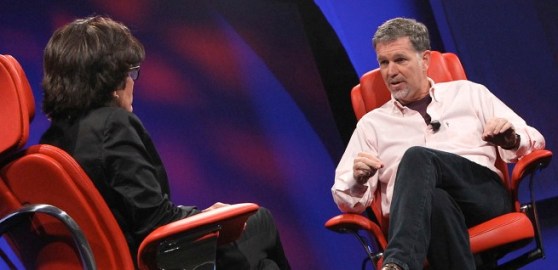Want smarter insights in your inbox? Sign up for our weekly newsletters to get only what matters to enterprise AI, data, and security leaders. Subscribe Now

Amazon could be losing up to $1 billion per year on its streaming video service Amazon Prime, according to Netflix CEO Reed Hastings, who commented during an interview with Dow Jones editors in New York yesterday.
Hastings’ assumption is based on content licensing deals that Amazon earlier this year after a bidding war with Netflix. Amazon is likely splitting those licensing costs between its domestic Prime service and its international streaming service LoveFlim, he said. And based on financial information from Netflix’s last quarterly earnings report, those number could be sound.
Amazon does want to compete with Netflix, which is evident now that Prime has a comparable content library selection. To do so it’ll need to spend the kind of money that Netflix does on licensing . And, Netflix estimates that it will spend $2.1 billion for content licensing over the next year, according to its last quarterly earnings report.
It’s hard to say if Amazon is actually losing that much money on its streaming deals. because the company could be making up for it in other ways. Amazon’s $79 annual Prime membership subscription gives its customers “free” 2-day shipping on items sold by Amazon and its partners, the free Prime Video service, and Kindle ebook lending. And Amazon has previously said that people are more likely to use Amazon’s online store (and use it more often) when they’re a prime member — meaning that Amazon could take a $1 billion loss on its streaming video service if its online sales are up by at least that amount.
Amazon is using a similar strategy for its line of Kindle e-readers and tablets. Kindles are sold at cost (or possibly even at a slight loss), while Amazon makes its money from digital media sales. Of course, since Amazon doesn’t detail any of this information in its own quarterly earnings, we don’t know how well this strategy is working.
But back to Hastings, the point I believe he was trying to make was that running a profitable streaming video service is very difficult. And at the same time, Hastings wants to highlight the fact that Netflix seems to be doing it very well. Allow me to break it down a little further though.
Hastings insists that Hulu and Amazon Prime are serious competitors, but doesn’t deny the ridiculously huge gap between those rival services’ total subscribers and Netflix’s total subscribers. (To give you some perspective, Netflix has 25 million subscribers in the U.S., and 30 million globally. By comparison, Hulu Plus has over 2 million paying subscribers. Amazon Prime memberships just recently started offering a monthly subscription plan, but I’m assuming Prime has no where near as many as Netflix.)
He and others at the company also highlight data usage statistics, which show Netflix as the clear leader of streaming video. Last week, for instance, broadband infrastructure analysis group Sandvine released a report that showed that Netflix accounted for 33 percent of peak downstream traffic in North America — compared to Amazon Prime (1.8 percent), Hulu (1.4 percent), and HBO Go (0.5 percent). Also, Hulu’s share includes both the free and paid traffic, and Amazon’s share includes free Prime videos as well as digital purchases and rentals. So yeah, Netflix is a beast.
Right now its even more important for Hastings to tout these kinds of numbers, too. The streaming video service is currently defending itself from billionaire financier Carl Icahn, who recently too a 10 percent stake in the company. Icahn’s investment is based on the idea that Netflix is hitting a roadblock in terms of how much more value it can provide shareholders on its own, and would like to sell the streaming service to a larger company (like Microsoft).

